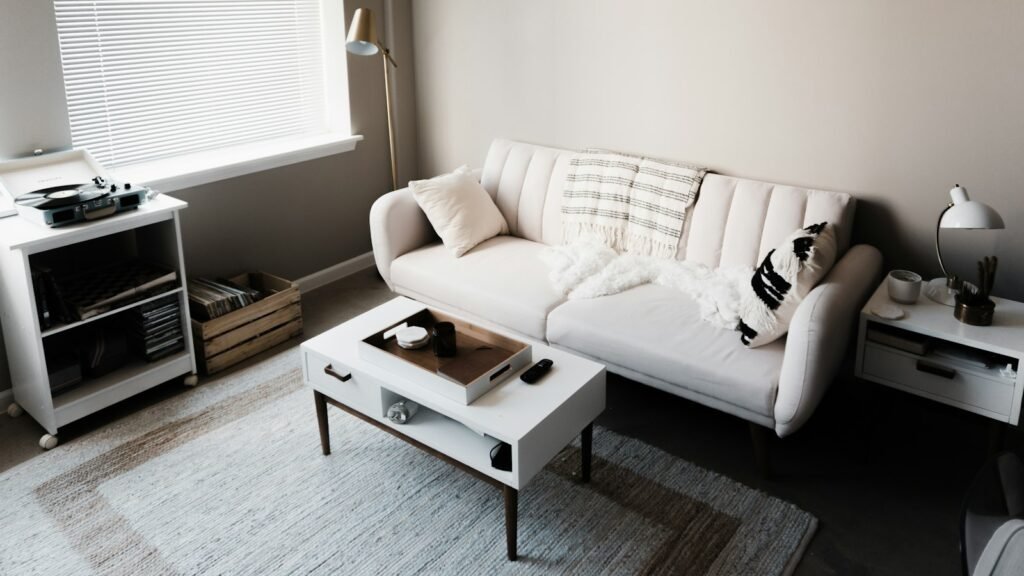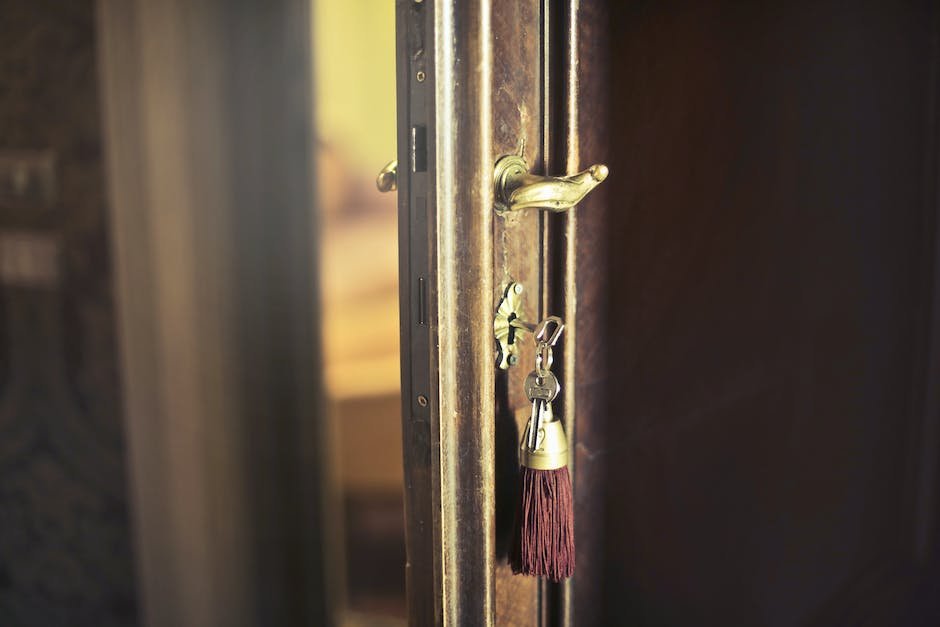Now Reading: How to Create a Safe Room in Your Home
-
01
How to Create a Safe Room in Your Home

How to Create a Safe Room in Your Home
Dreams of creating a sanctuary within the confines of our own homes often take the shape of cozy reading nooks or luxurious spa bathrooms. But what about a safe haven, a clandestine hideout designed to withstand the unpredictable nature of the outside world? Bringing to mind secret passageways and concealed chambers, the concept of a safe room both captivates and offers a sense of security. Whether you envision it as a refuge during natural disasters, a fortress against intruders, or simply a sanctuary for you and your loved ones to retreat to, the creation of a safe room is within your grasp. In this article, we will delve into the art of crafting your personal fortress, exploring key elements and essential steps that will undoubtedly transform a room into an impenetrable sanctuary.
Table of Contents
- Creating a Safe Room: Taking Proactive Measures for Your Home’s Security
- Prioritizing Your Space: Choosing the Ideal Location for Your Safe Room
- Building Your Fortress: Essential Elements and Materials for a Secure Room
- Fortifying Your Safe Haven: Critical Features for Maximum Protection
- Above and Beyond: Additional Safety Measures to Consider for Your Safe Room
- Q&A
- The Way Forward
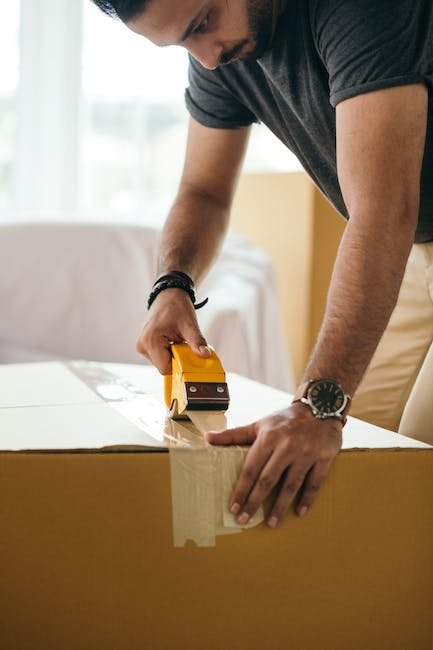
Creating a Safe Room: Taking Proactive Measures for Your Home’s Security
In today’s uncertain world, ensuring the safety of your loved ones and protecting your valuable possessions has become a top priority for homeowners. One effective way to enhance your home’s security is by creating a safe room, a secure area where you can find refuge during emergencies. By implementing proactive measures, you can fortify your safe room and provide a sense of peace and security for your family.
Designing an Ideal Safe Room:
- Location: Choose the ideal location for your safe room, preferably on the ground floor and easily accessible to all family members.
- Materials: Use sturdy materials such as reinforced concrete or steel panels for walls, doors, and windows to provide maximum protection.
- Communication: Install a reliable communication system for emergency contact, ensuring you can stay connected with authorities or loved ones outside.
- Essential Supplies: Stock your safe room with vital supplies like non-perishable food, water, medical kits, emergency lights, and a battery-powered radio.
Additional Security Measures:
- Surveillance: Install security cameras both inside and outside your home to monitor potential threats and intruders.
- Alarm System: Utilize a comprehensive alarm system equipped with motion sensors, glass break detectors, and panic buttons to notify authorities in case of emergencies.
- Secure Access: Consider reinforcing entry points and investing in strong locks, deadbolts, and security doors to make unauthorized entry difficult.
- Training and Drills: Educate your family members on safe room procedures and conduct regular drills to ensure everyone knows how to react and stay safe.
Remember, when it comes to your family’s security, taking proactive measures is crucial. By creating a safe room and implementing additional security measures, you can feel confident that you have taken significant steps towards safeguarding your home and loved ones.
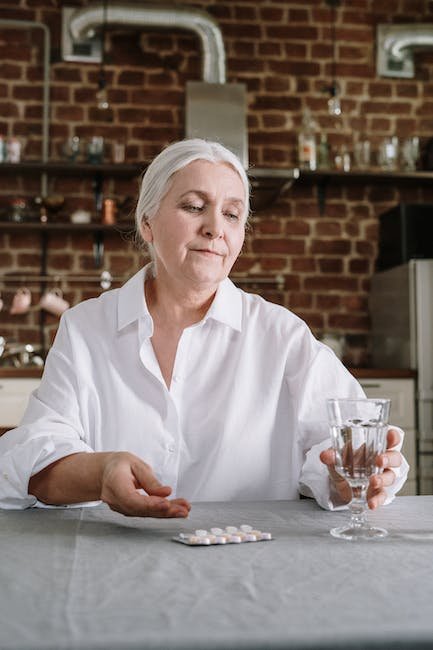
Prioritizing Your Space: Choosing the Ideal Location for Your Safe Room
When it comes to the safety and protection of your loved ones, choosing the perfect location for your safe room is crucial. This is the ultimate sanctuary within your home, offering a secure retreat during emergencies such as natural disasters or home invasions. To ensure its effectiveness, several key factors need to be considered.
1. Accessibility: Select a location that is easily accessible to all members of your household, including those with mobility challenges. Keep in mind that during an emergency, every second counts, so it’s essential to eliminate any potential obstacles or barriers that could delay access to your safe room.
2. Structural Integrity: Identify an area in your home that offers the highest level of structural integrity. Look for sturdy construction and minimal windows or exterior walls, as these can be vulnerable points during severe weather or acts of aggression. The location should be structurally sound to withstand any external forces that may be encountered.
3. Concealment: Ideally, your safe room should not be easily distinguishable from the rest of your home. It’s important to maintain the element of surprise and prevent potential intruders from identifying the exact location of your safe room. Consider disguising the entrance or integrating it into an existing room so it blends seamlessly with your home’s interior.
4. Communication: Ensure that your safe room has reliable means of communication, including a landline, cell phone reception, or a two-way radio. This way, you can stay connected with emergency services or communicate with family members outside the safe room if needed. It’s essential to have multiple communication options in case one method fails.
By carefully considering these factors, you can prioritize and choose the ideal location for your safe room. Remember, the goal is to create a safe haven within your own home, giving you and your loved ones peace of mind during uncertain times.
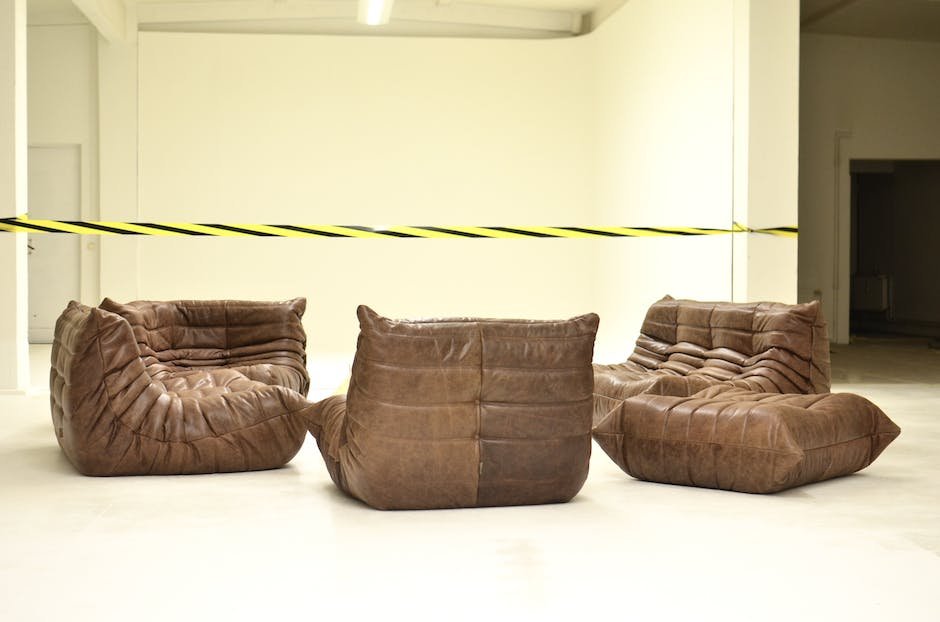
Building Your Fortress: Essential Elements and Materials for a Secure Room
Creating a secure room within your home can provide you and your loved ones with peace of mind in the face of potential threats. To build an impenetrable fortress, it is essential to carefully select the right elements and materials. Here are some key considerations:
1. Reinforced Walls:
Investing in strong and sturdy walls is paramount. Consider utilizing materials like reinforced concrete or steel for added durability. These materials provide a formidable barrier, capable of withstanding forceful impacts, and deter potential intruders.
2. Armor-Grade Doors:
An entry point is often the weakest link in any secure room. Opt for high-security doors crafted from reinforced steel or composite materials. Look for features such as multiple deadbolt locks and heavy-duty hinges that offer enhanced resistance against forced entry.
3. Advanced Locking Mechanisms:
No secure room is complete without top-of-the-line locking mechanisms. Consider installing electronic locks with biometric authentication or keypad access codes. These cutting-edge systems ensure that only authorized individuals can enter the fortress, leaving no room for compromise.
4. Surveillance Systems:
Keep a watchful eye on your fortress by incorporating a comprehensive surveillance system. Install high-resolution cameras with night vision capabilities and integrate them with motion sensors for added security. Ensure the feeds are accessible from a remote location, allowing you to monitor the situation even when you’re away.
5. Emergency Supplies:
Prepare for unforeseen circumstances by stocking your secure room with essential emergency supplies. These may include first aid kits, non-perishable food items, potable water, flashlights, battery-powered radios, and blankets. Prioritize items that can sustain you and your loved ones until help arrives.
Fortifying Your Safe Haven: Critical Features for Maximum Protection
When it comes to ensuring the safety and security of your cherished safe haven, it is crucial to consider the critical features that will provide you with maximum protection. By fortifying your home with these essential elements, you can create a fortress that offers peace of mind and safeguards against potential threats.
One of the key elements in fortifying your safe haven is a robust security system. Invest in state-of-the-art alarm systems that are equipped with motion sensors, door and window sensors, and surveillance cameras. These modern technologies act as a powerful deterrent to potential intruders and provide real-time monitoring of any suspicious activities. Consider integrating your security system with smartphone apps for seamless control and instant notifications, allowing you to take immediate action no matter where you are.
Additionally, reinforcing the physical barriers of your home is paramount. Install solid, high-quality doors and windows that are resistant to break-ins. Strengthen them further with deadbolt locks, security bars, or laminated glass for an added layer of protection. Ensuring that all entry points are properly secured will make it significantly more challenging for intruders to gain access to your safe haven.
- Invest in a robust security system with motion sensors, door and window sensors, and surveillance cameras.
- Integrate your security system with smartphone apps for seamless control and instant notifications.
- Install solid, high-quality doors and windows resistant to break-ins.
- Reinforce physical barriers with deadbolt locks, security bars, or laminated glass.
Remember, your home is your sanctuary, and taking steps to fortify its defenses is of utmost importance. By incorporating these critical features into your safe haven, you can create an impenetrable stronghold where you and your loved ones can live with a sense of security and tranquility.
Above and Beyond: Additional Safety Measures to Consider for Your Safe Room
When it comes to ensuring the utmost safety of your safe room, it’s essential to go above and beyond the basic precautions. Here are some additional safety measures that you may want to consider:
- Reinforced Walls: Consider reinforcing the walls of your safe room with high-strength materials such as concrete or steel. This extra layer of protection can increase the room’s resistance to external forces.
- Emergency Communication: Installing an emergency communication system within your safe room can be a lifeline during critical situations. Include a phone, two-way radio, or a panic button that directly contacts emergency services.
- Backup Power Supply: Ensure uninterrupted power supply for your safe room by installing a backup generator or a battery-based power system. This will keep essential devices running, such as lights, communication equipment, and ventilation systems.
- Emergency Supplies: Stock your safe room with ample emergency supplies, including non-perishable food, water, first aid kit, flashlights, blankets, and any necessary medications. Regularly check and rotate these supplies to ensure they remain fresh and accessible when needed.
Remember, safety should always be a top priority. By considering these additional safety measures, you can further enhance the security and peace of mind provided by your safe room.
Q&A
What is a safe room and why would I want one in my home?
A safe room is a secure space in your home designed to provide protection during emergencies or intrusions. It can be a sanctuary for your family during natural disasters like tornadoes or provide a secure area in case of a home invasion.
Where is the best location to construct a safe room in my house?
Ideally, a safe room should be located on the ground floor, away from exterior walls, windows, and doors. Basements, interior closets, or rooms with reinforced walls are excellent options.
What materials are commonly used to reinforce a safe room?
Concrete, steel, and heavy-duty security doors are commonly used to reinforce safe rooms. It is essential to consult a professional to ensure proper design and construction.
What security features should a safe room have?
A safe room should include a reinforced door with a deadbolt, a solid communication system, ventilation, and emergency supplies. Additionally, it should have minimal or no windows and be equipped with a backup power source.
Can I create a safe room on a budget?
Yes, it is possible to create a safe room on a budget by utilizing existing rooms in your house and reinforcing them with low-cost materials like plywood, fiberglass, or even stacked sandbags. Prioritize safety while working within your means.
How do I ensure my safe room remains hidden from intruders?
To maintain secrecy, try disguising your safe room as a common area, such as a storage closet or pantry. Use inconspicuous doors and camouflage tactics like bookshelves or hidden panels.
Should I consider installing security cameras inside my safe room?
It is not required but can be a valuable addition. Security cameras can help monitor the situation outside the room and assist emergency responders in assessing the situation.
How often should I practice using the safe room with my family?
Regular drills and practice sessions should be conducted, at least twice a year, to ensure that every family member knows how to access and properly use the safe room’s security features.
Do I need any permits or approvals to construct a safe room?
While regulations vary, it’s advisable to check with your local authorities to determine if building permits or specific approvals are required for constructing a safe room in your area. Compliance with building codes and regulations is crucial to ensure safety.
The Way Forward
As we draw the curtains on this enlightening guide, we hope you feel empowered to turn your humble abode into a fortress of safety and security. Remember, creating a safe room is not an extravagant luxury reserved for the privileged few, but a practical investment in the protection of those you hold dear.
In a world seemingly spinning out of control, knowing that you have a dedicated space where you can retreat and shield yourself from any storm can bring priceless peace of mind. Whether it’s a natural disaster, an unforeseen break-in, or even a rare zombie apocalypse (we never really know, do we?), your safe room will stand as a sanctuary amidst chaos.
By now, you are well-versed in the critical steps needed to assemble your bastion of security. From selecting the ideal room to reinforcing its vulnerable spots, you have learned that strength lies not only in the materials used but also in diligent planning. The importance of communication tools, emergency supplies, and sustenance cannot and should not be underestimated.
However, as we conclude, we implore you not to confine your newfound knowledge within the walls of your safe room. Share these insights with loved ones, neighbors, and even strangers in need. By spreading the word, you help build a network of resilience, ensuring that safety becomes a collective endeavor.
As you embark on this transformative journey, remember that creating a safe room is more than just bolts, bars, and reinforced walls. It is about fostering a mindset of preparedness and vigilance, fostering a culture where safety takes center stage. Embrace this opportunity to empower not only your physical space but also your peace of mind.
So, go forth and channel your inner architect of security. Craft a haven that will remain a comforting secret, hidden in plain sight. Remember, safety is not a luxury; it is a necessity we all deserve. With every brick you lay, with every precaution you take, you pave the way for a safer future – one home, one room at a time.
Now, let’s raise our imaginary glasses to you, brave protector of hearths and homes. May your safe room forever be a symbolic fortress, imbued with the strength to withstand any adversity that may come your way. Stay safe, stay vigilant, and thrive amidst the chaos.
As an affiliate, my content may feature links to products I personally use and recommend. By taking action, like subscribing or making a purchase, you’ll be supporting my work and fueling my taco cravings at the same time. Win-win, right?
Want to read more? Check out our Affiliate Disclosure page.

